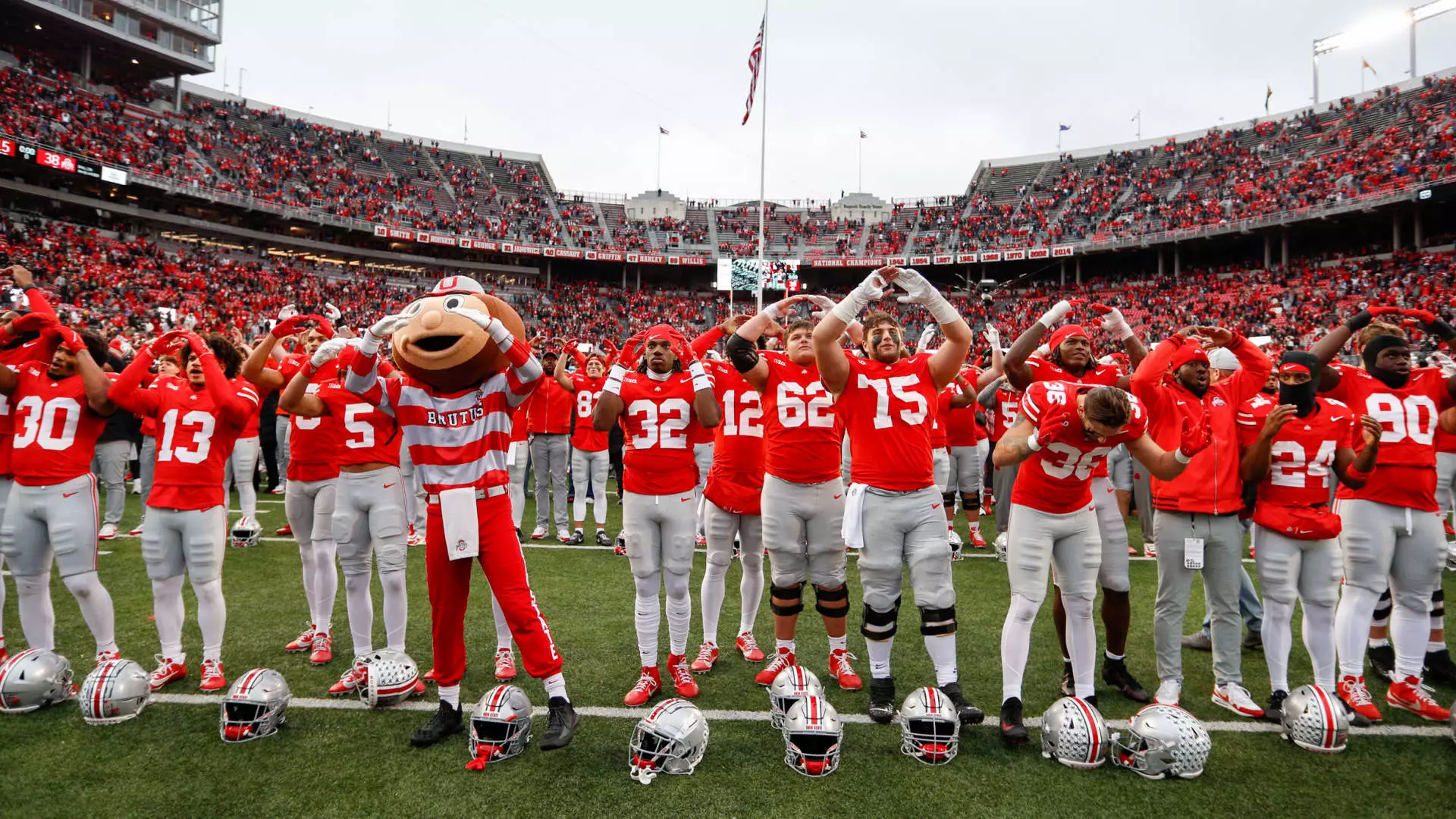In recent years, the realm of college sports has transitioned into a billion-dollar industry, generating immense revenue that has attracted the attention of private investors. With thousands of dedicated fans, passionate alumni, and lucrative broadcasting deals, athletic programs are increasingly seen as viable investment opportunities. The conundrum, however, lies in determining the actual worth of these college sports programs. CNBC’s recent analysis, which ranks 75 of the most valuable college athletic programs, offers some insight into this burgeoning sector, focusing on institutions in the NCAA Football Bowl Subdivision (FBS) while deliberately excluding military academies.
At the pinnacle of this hierarchy sits Ohio State University, valued at approximately $1.27 billion, a figure that starkly illustrates the financial potential embedded in college athletics. What factors contribute to such a staggering valuation? Primarily, Ohio State leads the pack in revenue generation, raking in $280 million in 2023 alone, the highest among competitors. However, financial success is just one component of the equation; its impressive alumni network—boasting over 600,000 members—and a fan base that exceeds 11 million significantly enhance Ohio State’s stature within the college sports landscape. Moreover, the Buckeyes’ ability to attract nearly $60 million in booster donations illustrates the institutional culture that supports its athletic program.
The rankings also reflect a broader trend wherein schools from the Southeastern Conference (SEC) and the Big Ten dominate the landscape. Driven by substantial media rights agreements, the SEC holds an estimated worth of $13.3 billion, translating to a staggering average of $832 million per institution. Following closely behind, the Big Ten stands with $13.2 billion in aggregate, showcasing the financial clout that accompanies affiliation with these prestigious conferences. In contrast, the Atlantic Coast Conference (ACC) and the Big 12 showcase lesser valuations, but their figures still underscore the profitability of college athletics, with each program worth approximately $562 million and $420 million respectively.
Methodology Behind the Valuations
To compile these valuations, CNBC collaborated with Jason Belzer, a respected authority in the field of athletic program financial analysis, who works with universities on name, image, and likeness (NIL) deals. The revenue data utilized in this evaluation stems from the Department of Education’s Equity in Athletics Data Analysis and the Knight Commission on Intercollegiate Athletics for the fiscal year 2023. Notably, the valuation framework started with a base revenue multiple of four for all institutions, which was then adjusted based on factors like conference membership, anticipated NIL spending, institutional support, and the size of alumni networks.
The expertise of various industry insiders further informed the analysis, though many of these contributors maintained confidentiality to discuss intricate program details. This behind-the-scenes approach highlights the complexity and variability involved in valuing college athletic programs, acknowledging that each institution comes with its unique set of circumstances and financial dynamics.
As private equity interest continues to rise in the realm of college sports, it becomes increasingly essential to understand the implications of such investments. The dynamics of revenue generation, competition, and the influence of media partnerships are all critical elements that investors must consider when seeking opportunities in this field. Additionally, the evolving landscape of NCAA regulations, particularly surrounding NIL compensation, may further redefine the financial prospects of college athletic programs.
The intersection of college athletics and private investment presents a fascinating arena filled with both risk and promise. The valuation of these programs not only reflects their current market position but also sets the stage for future growth, making it a pivotal area of focus for investors striving to capitalize on the unique opportunities within this lucrative sector. The current landscape suggests that as long as colleges continue to foster fierce rivalries and provide entertaining spectacles, the financial tide will likely rise, benefiting all stakeholders involved in this vibrant and dynamic industry.


Leave a Reply